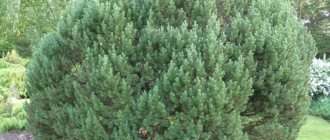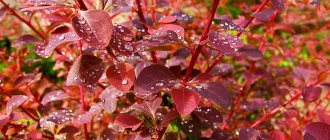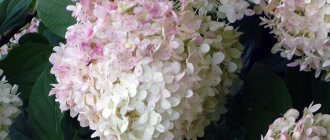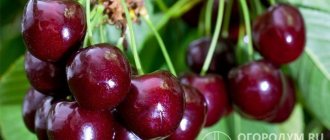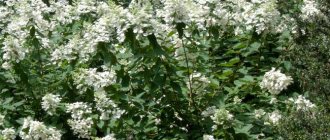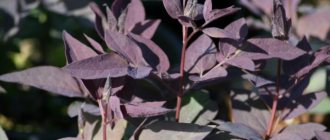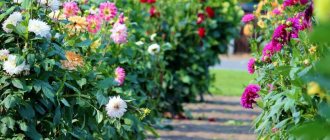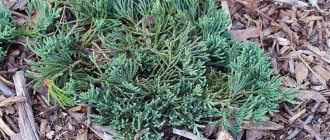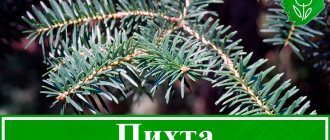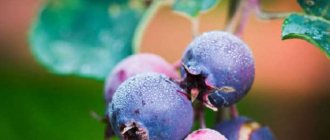Junipers (Juniperus) are old-timers of the earth's flora: they appeared about 50 million years ago. Modern species of junipers are very diverse, among them there are giants up to 30 m tall and dwarf trees that rise barely 10–15 cm from the ground. About 70 species are known, of which about a dozen of the most decorative and resistant species are grown in Russia.
- Virginia juniper (Juniperus virginiana) Hetz (J. pfitzeriana Hetzii, Juniperus virginiana Hetz), Glauca, Gray Owl, Tripartita
- Agnieszka, Andorra Compact, Blue Chip (Blue Moon), Golden Carpet, Glauca, Gray Pearl, Icee Blue (Momber), Jade River, Variegata, Wiltonii
- Leningrad
- Variegata
- Blue Alps, Expansa Variegata, Kuriwao Gold, Spartan, Torulosa VarieМata (Kaizuka Variegata), Plumosa Aurea (J. pfitzeriana Plumosa Aurea), Stricta
- Nana
- Arnold, Compressa, Golden Showers, Depressa Aurea, Green Carpet, Нornibrookii, Horstmann, Meyer, Repanda, Suecica Aurea
- Blue Arrow, Blue Heaven, Moonglow, Skyrocket (Sky Rocket)
- Allgold (All Gold), Blue Pacific, Schlager
- Blue and Gold (Blue Gold), Carbery Gold, Gold Coast, Old Gold, Pfitzeriana Aurea, Pfitzeriana Glauca
- Blue Carpet, Blue Star, Floreant, Holger, Meyeri
- Juniper seedlings: selection rules
- Feeding
Virginia juniper (Juniperus virginiana)
The plant is native to North America. In culture since 1664. The needles are scaly, needle-shaped on young plants and the lower branches of adult specimens. The cone berries are blue-black, round.
Virginia juniper Hetz (J. pfitzeriana Hetzii, Juniperus virginiana Hetz)
Shrub up to 2–3 m high and more than 3 m in diameter. The crown is spreading. The needles are gray-blue and turn brown in winter.
Virginia juniper Hetz (J. pfitzeriana Hetzii, Juniperus virginiana Hetz)
Juniperus virginiana Hetz Variegata
Juniper virginiana Glauca
Columnar tree, up to 5–8 m high and up to 2–5 m in diameter, with a dense crown. The needles are greenish-gray.
Juniper virginiana Gray Owl
The shrub is up to 1.5 m high at 10 years of age and more than 3 m in diameter. The needles are gray-green or gray-blue, with a bluish-bronze tint in winter.
Juniper virginiana Gray Owl
Juniper virginiana Tripartita
Shrub up to 1.5–2 m high. Needles are needle-shaped, bluish above, green below.
Ecology
Characteristic shape in old field succession
Eastern juniper is a pioneer species, which means that it is one of the first trees to repopulate cleared, eroded, or otherwise damaged land. It is unusually long lived among pioneer species, with the potential to live over 900 years. It is commonly found in prairies or oak barrens, old pastures, or limestone hills, often along highways and near recent construction sites. It is an alternate host for cedar–apple rust, an economically significant fungal disease of apples, and some management strategies recommend the removal of J. virginiana
near apple orchards
In many areas it is considered an invasive species, even if native. It is fire-intolerant, and was previously controlled by periodic wildfires. Low branches near the ground burn and provide a ladder that allows fire to engulf the whole tree. Grasses recover quickly from low severity fires that are characteristic of prairies that kept the trees at bay. With the urbanization of prairies, the fires have been stopped with roads, plowed fields, and other fire breaks, allowing J. virginiana
and other trees to invade. Trees are destructive to grasslands if left unchecked, and are actively being eliminated by cutting and prescribed burning. The trees also burned very readily, and dense populations were blamed for the rapid spread of wildfires in drought stricken Oklahoma and Texas in 2005 and 2006.
Eastern juniper benefits from increased CO2 levels, unlike the grasses with which it competes. Many grasses are C4 plants that concentrate CO2 levels in their bundle sheaths to increase the efficiency of RubisCO, the enzyme responsible for photosynthesis, while junipers are C3 plants that rely on (and may benefit from) the natural CO2 concentrations of the environment, although they are less efficient at fixing CO2 in general.
Damage done by J. virginiana
includes outcompeting forage species in pastureland.
The low branches and wide base occupy a significant portion of land area. The thick foliage blocks out most light, so few plants can live under the canopy. The needles that fall raise the pH of the soil, making it alkaline, which holds nutrients such as phosphorus, making it harder for plants to absorb them. Juniperus virginiana
has been shown to remove nitrogen from the soil after invading prairies. It has also been found to reduce carbon stores in the soil. This reduction in soil nutrients also reduces the amount and diversity of microbial activity in the soil.
Cedar waxwings are fond of the “berries” of these junipers. It takes about 12 minutes for their seeds to pass through the birds' guts, and seeds that have been consumed by this bird have levels of germination roughly three times higher than those of seeds the birds did not eat. Many other birds (from bluebirds to turkeys) and many mammals also consume them.
Juniper horizontal, or prostrate (Juniperus horizontalis)
A creeping, low-growing shrub with long branches, native to North America. The needles are scaly, and in cultivation also needle-shaped. The cone berries are spherical, black.
Varieties are often similar to each other. Creeping forms can be grafted onto a low trunk.
Juniper horizontal Agnieszka
Polish slow-growing dwarf variety: at 10 years of age, 0.3 m high and 1.5 m in diameter. The needles are very small, bluish-green, and after frost they acquire a lilac hue.
Juniper horizontal Agnieszka
Juniper horizontal Andorra Compact
A slow-growing shrub, with a dense cushion-shaped crown, up to 0.4 m in height and up to 2 m in diameter. The needles are bluish-green, with a purple tint in winter.
Juniper horizontal Andorra Compact
Juniper horizontal Blue Chip (Blue Moon)
A shrub with an irregularly shaped crown and short ascending shoots, up to 0.3 m high. The needles are silver-blue.
Juniper horizontal Blue Chip (Blue Moon)
Juniper horizontal Golden Carpet
A slow-growing shrub, with a dense crown, up to 0.1 m in height and up to 1 m in diameter. The needles are yellowish-green, bright yellow at the ends of young shoots. Sports from Wiltonii.
Juniper horizontal Golden Carpet
Juniper horizontalis Glauca
Ground cover plant up to 0.3 m high and up to 2 m in diameter! Creeping shoots adjacent to the ground. The needles are from blue-steel to blue-green. Suitable for rocky and heather gardens, stone retaining walls.
Juniper horizontalis Glauca
Juniper horizontal Gray Pearl
A shrub with vertically growing branches, up to 0.2–0.4 m in height and up to 1 m (1.5 m) in diameter. The needles are blue-green or steel-blue, bronze in winter.
Juniper horizontal Icee Blue (Momber)
Dwarf form, with a dense spreading crown, up to 0.1 m in height and up to 1.5–2 m in diameter. The needles are silver-blue.
Juniper horizontal Icee Blue (Momber)
Juniper horizontal Jade River
Dense shrub, up to 0.4 m tall and up to 2.5 m in diameter. The needles are silver-blue, tinged with purple in winter.
Juniper horizontal Jade River
Juniper horizontal Prince of Wales
Slow-growing shrub, up to 0.3 m high and up to 2.5 m in diameter. The needles are green, turning bronze in winter.
Juniper horizontal Prince of Wales
Juniper horizontal Variegata
A shrub up to 0.2 m high and up to 1.5–2 m in diameter. The needles are blue-green with rare cream patches.
Juniper horizontalis Wiltonii
A slow-growing, densely branched shrub, up to 0.1 m high and up to 2 m in diameter. The needles are silver-blue.
Daurian juniper (Juniperus davurica)
It grows naturally in the Far East, Eastern Siberia, northern Mongolia and China. A slow-growing creeping shrub with ascending branches, up to 0.5–1 m high. The needles are needle-shaped, scaly at the ends of the shoots, bright green in summer, turning brown in winter.
Round cones with a diameter of 5–6 mm, dark blue with a bluish bloom. Winter hardiness is high. Rare in culture.
Juniperus daurica Leningrad
The most famous variety of Daurian juniper. The needles are green, olive-brown in winter.
Description of culture
Juniper Virginia is a coniferous crop. The homeland of the plant is North America. Ephedra belongs to the cypress family. In nature, it grows on rocky slopes and pre-desert areas. This is a picky plant, adapted to growth in difficult conditions, so juniper can grow in any climatic zone, with the exception of the equator and Antarctica.
The branches of the plant are covered with small needles or scales, which emit a pleasant pine aroma. Its fruits are edible. They are dark blue cone-shaped berries. The fruits are harvested before frost, because it is during this period that they reach maximum ripeness.
Used by designers to create compositional objects:
- As a tapeworm, in the center of a flower bed or landscape composition;
- As part of a rock garden or rock garden design;
- In the design of alleys and barrier fences when zoning a site;
- In a hedge, as a main crop or as an addition to a living fence design.
In any case, the plant looks quite impressive. The light-loving nature of the varieties allows it to be used in open compositions and areas.
Cossack juniper (Juniperus sabina)
In nature it grows on the slopes of the mountains of Crimea, the Caucasus, Mongolia, Central and Western Europe. Shrub up to 1.5 m high and up to 5 m wide, rarely an upright shrub or tree.
Juniper Cossack
The round coneberries are brown-black with a bluish coating. Known in culture since 1580.
Juniper Cossack Variegata
Creeping shrub, up to 0.6–1 m high and up to 1.5–2 m in diameter. Gray-green needles with cream strokes.
Juniper Cossack Variegata
Chinese juniper (Juniperus chinensis)
It grows naturally in China, Mongolia and Korea. Most often a creeping shrub with dark green, mostly scale-like needles. The cone berries are almost oval, dark blue, almost black.
Chinese juniper Blue Alps
An erect, slow-growing shrub, up to 2.5–4 m high and 2 m in diameter, with a compact dense crown and hanging shoots. The needles are bluish-green above, silvery below. Susceptible to sunburn.
Chinese juniper Blue Alps
Chinese juniper Expansa Variegata
The shrub at 10 years of age is about 0.3 m tall and 1 m in diameter. The needles are green, the tips of the shoots are white-cream, with a bronze tint in winter.
Chinese juniper Expansa Variegata
Chinese juniper Kuriwao Gold
A shrub with a spreading spherical crown, at 10 years of age up to 1.5 m high and up to 2 m in diameter. Young needles are yellowish-green, mature ones are green.
Juniper Chinese Spartan
A fast-growing shrub, up to 3–5 m high, with a columnar crown, which over time becomes wide-pyramidal. The needles are green.
Juniper Chinese Spartan
Chinese juniper Torulosa VarieMata (Kaizuka Variegata)
A slow-growing shrub, up to 0.9 m high and 0.6 m wide at 10 years of age. The needles are blue-green with creamy white splashes. In a sunny place the variegation is more pronounced.
Chinese juniper Plumosa Aurea (J. pfitzeriana Plumosa Aurea)
An erect shrub, 2–3 m high and up to 3–4 m in diameter, with an uneven crown. The needles are yellow, bronze-yellow in winter.
Juniperus chinensis Stricta
A slow-growing dwarf tree, up to 1.5 m high and 0.5 m in diameter by the age of 10. The crown is conical, the shoots grow vertically, the needles are green-blue.
Juniperus chinensis Stricta
Juniper (Juniperus procumbens)
The plant is native to Japan. Creeping dioecious shrub with outstretched branches, 0.2–0.5 m high, crown diameter up to 2–4 m. The needles are bluish-green. The cone berries are round, blackish-brown with a pale blue waxy coating. Can be grafted onto a standard. Used for trimming bonsai.
Juniperus recumbent Nana
Japanese variety. Creeping shrub, with a dense crown up to 0.4 m high and a crown diameter up to 1–1.5 m. The needles are bluish-green.
Juniper recumbent Nana on a trunk
Common juniper (Juniperus communis)
One of the most widespread species, it grows naturally in the forests of Northern and Central Europe, Siberia, East Asia, North Africa and North America. Long-lived, slow-growing tree or shrub. The needles are green, needle-shaped, with a waxy coating. The cone berries are round, black with a bluish coating.
Juniper vulgare Arnold
A slow-growing compact shrub, up to 3 m high and with a narrow columnar crown, up to 0.6 m in diameter. The needles are bluish-green.
Common juniper Compressa
A dwarf variety, with a narrow columnar dense crown, up to 0.8–1 m in height and up to 0.3 m in diameter. The needles are light green.
Common juniper Golden Showers
Slow-growing shrub, up to 1 m high. The needles are golden-yellow, in the second half of summer and autumn – golden-green.
Common juniper Golden Showers
Common juniper Depressa Aurea
Shrub up to 0.6–1 m high and up to 1.5–2 m in diameter. The needles are dark green with yellow young shoots, yellow-brown in autumn.
Common juniper Green Carpet
Slow-growing creeping shrub, up to 0.1 m high and crown diameter up to 1.5–2 m. The needles are light green, soft.
Common juniper Green Carpet
Common juniper Нornibrookii
Slow-growing shrub, up to 0.3–0.5 m high and up to 2–3 m in diameter. The needles are light green, with a silver-white stripe.
Common juniper Horstmann
A shrub with strongly weeping shoots, up to 2.5 m high and up to 2–3 m in diameter. The needles are bluish-green.
Common juniper Horstmann
Common juniper Meyer
A fast-growing shrub with pronounced multi-trunks, up to 3 m in height and up to 1.2 m in diameter. The needles are bluish-green.
Common juniper Repanda
Creeping form, up to 0.3–0.5 m high and crown diameter up to 1.5–2.5 m, with a cushion-shaped crown. The needles are dark green with silver stripes on the upper side, brownish-green in winter.
Common juniper Suecica Aurea
Slow-growing shrub, with a dense columnar crown, up to 2–3 m high. The needles are yellow-green, yellow-brown in winter.
Rock juniper (Juniperus scopulorum)
The species grows in nature on the slopes of the Rocky Mountains of North America at an altitude of 2000 m above sea level. Tree, usually multi-trunked. The needles are dark green, mostly scale-like, needle-shaped, up to 12 mm long. The round cones are dark blue with a bluish tinge.
Rock juniper Blue Arrow
A narrow-columnar shrub with a dense crown, up to 2 m high at 10 years of age. The needles are bluish-gray and scaly.
Rock juniper Blue Arrow
Rock juniper Blue Heaven
Shrub up to 2–2.5 m high and up to 1.5 m in diameter, with a uniform conical crown. The needles are bluish-green.
Rock juniper Blue Heaven
Rock juniper Moonglow
Shrub up to 3–5 m high and up to 1 m in diameter. The needles are silver-blue. There is a variegated variant, Moonglow Variegated, with a creamy white color.
Rock juniper Moonglow
Juniperus rocky Skyrocket (Sky Rocket)
Popular variety. A narrow columnar shrub, up to 6 m high (2.5 m at 10 years of age) and up to 0.8–1 m in diameter. The needles are grayish-blue.
Juniperus rocky Skyrocket (Sky Rocket)
Description of the plant
Virginia juniper is an evergreen plant reaching a height of 30 meters. In young specimens the crown is narrow and elliptical in shape. Over time, the branches of the tree grow in different directions and it acquires a columnar shape.
The trunk is covered with brown flaking bark. As wood ages, it becomes covered with small cracks. Juniper shoots are very thin.
The needles look like scales or small needles and are dark green. The color of the needles may change depending on the air temperature. With the onset of winter, some varieties turn brown.
The berries are spherical in shape, dark blue with a slight bloom. The fruits can remain on the branches until winter, giving the bush a decorative appearance.
The shrub has a very developed root system, since under natural conditions juniper grows on mountain slopes or wetlands.
Coastal or crowded juniper (Juniperus conferta)
It grows naturally in Japan and Sakhalin. Creeping shrub with very long branches rising at the ends. The needles are thick, light bluish-green, very prickly. The cone berries are dark blue with a bluish tinge.
Coastal juniper Allgold (All Gold)
A slow-growing form, with yellow needles that turn green in the shade, up to 0.2 m in height and up to 1 m in diameter.
Coastal juniper Blue Pacific
A fast-growing form, up to 0.3–0.4 m high and up to 1 m in diameter. The needles are bluish-green. Can be grafted onto a standard.
Coastal juniper Schlager
A squat, spreading shrub up to 0.3 m high and up to 1 m in diameter. The needles are long, spiny, light green.
Coastal juniper Schlager
References
- ^ Farjon, A. (2005). Monograph of Cupressaceae and Sciadopitys
. Royal Botanic Gardens, Kew. ISBN 1-84246-068-4 - ^ Adams, R. P. (2004). Junipers of the World
. Trafford. ISBN 1-4120-4250-X - McKinley, Duncan C., and John M. Blair. "Woody Plant Encroachment by Juniperus virginiana
in a Mesic Native Grassland Promotes Rapid Carbon and Nitrogen Accrual." Ecosystems 11.3 (Apr. 2008): 454-468. - Norris, Mark D., John M. Blair, and Loretta C. Johnson. "Altered Ecosystem Nitrogen Dynamics as a Consequence of Land Cover Change in Tallgrass Prairie." American Midland Naturalist 158.2 (Oct. 2007): 432-445.
- McKinley, Duncan C., and John M. Blair. "Woody Plant Encroachment by Juniperus virginiana in a Mesic Native Grassland Promotes Rapid Carbon and Nitrogen Accrual." Ecosystems 11.3 (Apr. 2008): 454-468.
- Lyon, William S. (1998). Encyclopedia of Native American Healing
. W. W. Norton & Company, Inc. p. 173. ISBN 0-393-31735-8. - Welch, H., & Haddow, G. (1993). The World Checklist of Conifers
. Landsman's. ISBN 0-900513-09-8.
Liatris - the best varieties, cultivation characteristics and beneficial properties of flowers
Pfitzer's juniper (Fitzer's), or medium (Juniperus × pftzeriana)
Hybrid of Chinese and Cossack junipers. The most widespread and popular group of junipers in the world. Shrub up to 2 m high, with a spreading crown. The needles are scaly and needle-shaped. It should be noted that in harsh winters in the Moscow region, many varieties have noticeable damage. A protected landing site is preferred.
Juniper Pfitzer or medium Blue and Gold (Blue Gold)
A slow-growing shrub, up to 1 m high and up to 1.5 m in diameter. The needles are bluish-green with golden-yellow splashes.
Juniper Pfitzer or medium Blue and Gold (Blue Gold)
Juniper Pfitzer or medium Carbery Gold
A low-growing shrub with a spreading crown and golden-hued needles. The shoots are prostrate, the ends slightly hanging.
Juniper Pfitzer or medium Carbery Gold
Pfitzer's Juniper or Gold Coast Medium
Shrub up to 1 m high and up to 3 m in diameter, with a dense crown. The needles are yellow on the tops of the shoots and darken in winter.
Pfitzer's Juniper or Gold Coast Medium
Juniper Pfitzer or medium Gold Star
Slow-growing shrub, up to 1 m high and up to 2.5 m in diameter. Golden needles.
Juniper Pfitzer or medium Old Gold
A slow-growing shrub, up to 1 m high and up to 2.5–3 m in diameter. The needles are scaly and needle-shaped, the color is permanently golden.
Juniper Pfitzer or medium Old Gold
Pfitzer's juniper or medium Pfitzeriana Aurea
A fast-growing shrub, up to 2.5–3 m high and up to 3.5–5 m in diameter. The crown is prostrate and raised over time. The needles are scaly and needle-like, yellowish-golden on young shoots, later turning green.
Pfitzer's juniper or medium Pfitzeriana Aurea
Pfitzer's juniper or medium Pfitzeriana Glauca
Shrub up to 1.5 (2.5) m high and up to 3 m in diameter. The needles are bluish-green.
Uses
Juniper Blue Arrow description, photo, planting and care
A log sawn in two and turned on a lathe, exposing the pale and the reddish
"Berries" of the 'Corcorcor' cultivar
The fine-grained, soft brittle pinkish- to brownish-red is fragrant, very light and very durable, even in contact with soil. Because of its rot resistance, the wood is used for fence posts. The aromatic wood is avoided by moths, so it is in demand as lining for clothes chests and closets, often referred to as cedar closets and cedar chests. If correctly prepared, it makes excellent English longbows, flatbows, and Native American sinew-backed bows. The wood is marketed as “eastern redcedar” or “aromatic cedar”. The best portions of the heartwood are one of the few woods good for making pencils, but the supply had diminished sufficiently by the 1940s that it was largely replaced by incense-cedar.
Juniper oil is distilled from the wood, twigs and leaves. The essential oil contains cedrol which has toxic and possibly carcinogenic properties. The cones are used to flavor gin.
Native American tribes have historically used juniper wood poles to mark out agreed tribal hunting territories. French traders named Baton Rouge, Louisiana, (meaning “red stick”) from the reddish color of these poles. It is still used in ceremony by some Nations.
The Cahokia Woodhenge series of timber circles built by the pre-Columbian Mississippian culture in western Illinois was constructed using massive red cedar logs. One version of the circle, Woodhenge III
(thought to have been constructed in approximately 1000 CE), had 48 posts in the 410 feet (120 m) diameter circle and a 49th pole in the center.
Among many Native American cultures, the smoke of the burning cedar is used to drive away evil spirits prior to conducting a ceremony, such as a healing ceremony.
During the Dust Bowl drought of the 1930s, the Prairie States Forest Project encouraged farmers to plant shelterbelts (wind breaks) made of Juniperus virginiana
throughout the Great Plains. They thrive under adverse conditions – both drought tolerant and cold tolerant, they grow well in rocky, sandy, and clay substrates. Competition between trees is minimal, so they can be planted in tightly spaced rows, and the trees still grow to full height, creating a solid windbreak in a short time.
A number of cultivars have been selected for garden planting, including 'Canaertii' (narrow conical; female) 'Corcorcor' (with a dense, erect crown; female), 'Goldspire' (narrow conical with yellow foliage), and 'Kobold' (dwarf). Some cultivars previously listed under this species, notably 'Skyrocket', are actually cultivars of J. scopulorum
.
In the Missouri, Oklahoma and Arkansas Ozarks, eastern juniper is commonly used as a Christmas tree.
Scaly juniper (Juniperus squamata)
Dioecious, less often monoecious, creeping shrub, grows naturally in the mountainous regions of East Asia. The needles are needle-shaped, very hard. The oval cones are black and glossy.
Juniper scaly Blue Carpet
Popular Dutch variety. Creeping shrub, 0.3–0.5 m high and 1.5–2.5 m in diameter. The needles are blue, sharp, but not prickly.
Juniper scaly Blue Carpet
Juniper scaly Blue Star
A dwarf slow-growing shrub, up to 0.5 m high and up to 1.5 m in diameter. The needles are silver-blue.
Juniper scaly Blue Star
Juniper scaly Floreant
Slow-growing shrub, up to 0.5–1 m high and up to 1.5 m in diameter, with a spherical crown. The needles are blue with light cream splashes.
Juniper scaly Holger
Moderately growing shrub, up to 1 m high and up to 1.5 m in diameter. Young growths are yellow in color, then become bluish. The color of the needles is brighter in sunny areas.
Juniper scaly Holger
Juniper scaly Holger
Juniper squamosus Meyeri
Upright shrub. The needles are silver-blue.
Features of planting junipers
Juniper seedlings: selection rules
The choice of planting material is very important: in the case of juniper, seedlings with a closed root system are preferable. Juniper with OKS can be planted for a very limited time - in April-May or at the end of August - September in moderately humid weather. When purchasing, carefully inspect the needles. At the slightest sign of her ill health, it is better to refuse the purchase.
Place for juniper
Junipers are planted in sunny places; in the shade they can grow shapeless and loose. At the same time, decorative brightly colored varieties may lose all their advantages. Only M. vulgare is able to tolerate some shading.
Planting pit
The distance between plants should be at least 0.5 m for medium-sized and short ones, up to 2 m for tall forms. The depth of the planting hole depends on the size of the earthen ball and the root system of the plant. Usually junipers are planted in a hole, the size of which is 2-3 times larger than the coma. For large bushes - 70 cm deep.
At the bottom of the hole, you definitely need to make a drainage layer of broken bricks and sand 15–20 cm thick. And cover the roots with a soil mixture consisting of peat, turf soil and sand in a ratio of 2:1:1.
Before planting, all container plants must be soaked in water by keeping the earthen ball in a container of water for about 2 hours. Large plants are planted so that the root collar is 5–10 cm above the edges of the planting hole. In young plants it should be at ground level.
The optimal soil acidity is from 4.5 to 7 pH, depending on the type and variety. Liming is useful for Cossack juniper - dolomite flour is added before planting on heavy soils.
Landing in the ground
Under natural conditions, juniper reproduces by seeds, so-called self-sowing. At home, the plant is propagated by cuttings.
The species does not like moisture, so when choosing a place for planting, you need to pay attention to the proximity of groundwater and the presence of artificial water sources. For example, it is not recommended to plant along buildings, since when it rains, water will flow directly under the roots of the plant
The planting site should be sunny; shade has an unfavorable effect on conifers: plant growth slows down, and the needles acquire a yellowish tint. The soil can be any; juniper is not picky about the composition of the soil.
If you have to plant a seedling with bare roots, then it is preferable to do this in rain or cloudy weather, and ensure abundant watering in the first months. The root collar is not buried to provide the plant with oxygen.
Features of caring for junipers
Feeding
Junipers are undemanding to soil. All they need is the application of nitroammophoska (30–40 g/m2) or universal granular fertilizer (20 g per 10 liters of water) in April-May.
Watering
Junipers are watered only in dry summers, and then infrequently - 2-3 times per season. Watering rate is 10–30 liters per adult plant. They can be sprayed once a week, always in the evening.
Common and Chinese junipers do not tolerate dry air. Juniperus virginiana is drought-resistant, but grows best in soils of average moisture.
Caring for junipers immediately after planting
Young plantings of junipers require loosening - shallow, after watering and weeding. Immediately after planting, the soil is mulched with peat, wood chips, pine bark or pine nut shells, the thickness of the mulch layer is 5–8 cm. Heat-loving cultivars are mulched for the winter, and in early spring the mulch must be raked away, as it can cause rotting of the root collar.
Trimming
Due to their slow growth, junipers are pruned very carefully. Dry branches are mainly removed at any time of the year.
Preparing for winter
Only young plants are covered for the winter, and then only in the first year after planting.
Juniper propagation
Juniper can be propagated by seeds and cuttings.
Diseases and pests
The most common disease for juniper virginiana is a fungal disease, due to which fusiform thickenings appear on parts of the plant, the root collar swells, the bark dries and crumbles, forming open wounds. Branches affected by diseases die over time, the needles turn brown and quickly fall off. In the later stages of the disease, the bush dies.
If a juniper is infected with a fungal disease, you must immediately cut off all infected branches and disinfect open wounds with a 1% solution of iron sulfate and cover them with garden varnish. Cut branches should be burned.
In addition to fungal disease, juniper virginiana may suffer from bark necrosis or Alternaria blight, but the treatment method for such diseases is completely identical.
The main pests of juniper virginiana are considered to be moths, aphids, spider mites and scale insects. Shrub spraying products, which can be purchased in specialized stores, will help protect the plant.
Design with junipers
Junipers are quite widely used in landscape design: soft (in most species) needles of various colors, delicate aroma, undemanding to growing conditions - these are the reasons why most gardeners and designers are very fond of them.
Junipers are planted in alleys, grown on alpine hills and in rockeries. At any time of the year they are good in garden compositions with other conifers: spruce, pine, thuja, fir and hemlock. In spring and summer, their green, blue or, conversely, yellow color emphasizes and sets off the beauty of rhododendrons and hydrangeas, mahonias and heathers and numerous bulbous plants: tulips, daffodils, hyacinths, etc.
